Pete Docter And Jonas Rivera Talk 'Inside Out' Struggles, Score, Parks And Pixar Pressures
Pete Docter has been making movies for almost thirty years. In that time, he's directed three features. Two of those have been produced by Jonas Rivera. One of those films won the Oscar for Best Animated Film. The latest one might do the same.
That latest film is Inside Out, Pixar's 15th creation, which is now in theaters. Co-written and directed by Doctor and produced by Rivera, it follows five emotions inside the mind of an 11-year-old girl. As a follow up to both Monsters Inc., Docter's first film, and Up, Rivera and Docter's first team-up, Inside Out already has a ton to live up to. Then there's the fact it's the first Pixar movie since 2013, and the first original property since 2012. That's a ton of expectations on top of the already-high bar Pixar has set in the past 20 years.
Speaking with Docter and Rivera, we talked about those expectations. We also talked about how large the movie got before focusing it down, developing the story, animation challenges, Saturday Night Live, Michael Giacchino and theme parks. It's a wide spreading conversation, which you can now read below.
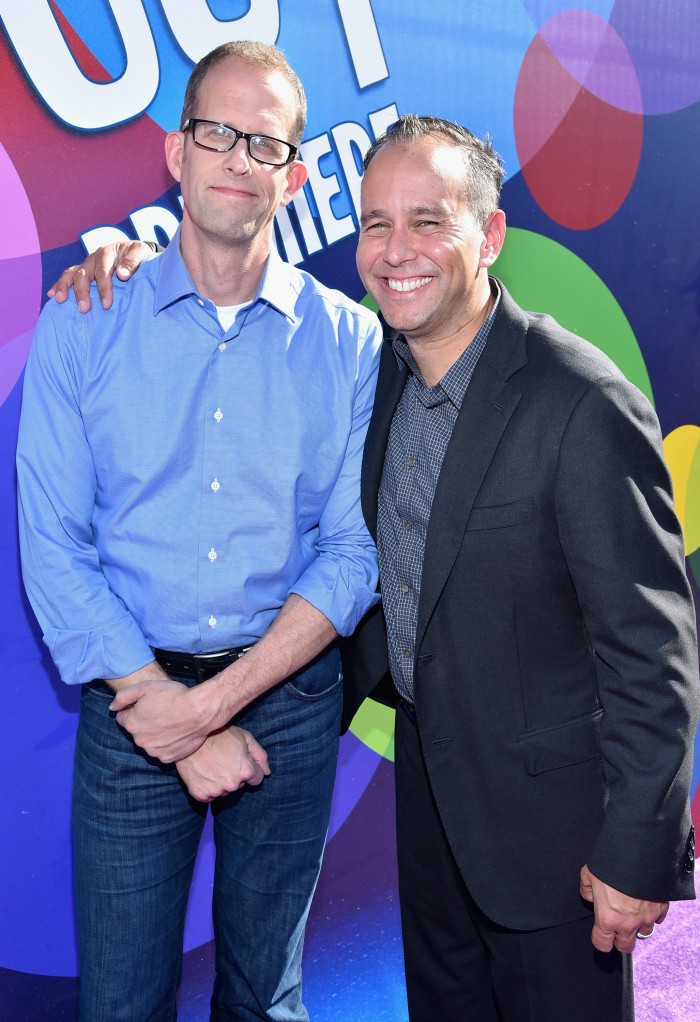 So Inside Out is the first Pixar movie we're getting in over a year. And it's the first original one in a while too. There's the already pressure of being a Pixar movie so do those factors add any more pressure on top top of that?
So Inside Out is the first Pixar movie we're getting in over a year. And it's the first original one in a while too. There's the already pressure of being a Pixar movie so do those factors add any more pressure on top top of that?
Jonas Rivera: That's a good question. It's certainly...
Pete Docter: I think every film has pressure, you know.
JR: Yeah. I don't know if it's bad.
PD: I don't think one has more or less. I think, well, we sort of felt it as the film went on this year. That did feel like "Oh there is a little extra pressure" 'cause of that gap.
JR: Yeah. That's your come back.
PD: Just that anticipation of...
JR: It was just because we worked on this from sort of the day after we wrapped Up, this came to fruition. Every movie we work on, we treat it like it's our last one. Just to be healthy about it. And to be grateful for this position we have.
PD: And recognize how incredibly lucky we are to be doing this.
JR: Yeah. It's so amazing. And so we put everything into it. And then, you get close to when they're done and you almost have these panic attacks. I remember this with Up too it was like "Oh my God, what have we done? Is this the–?"
PD: It's almost over.
JR: I don't know if you heard Lewis [Black], he said he told us "I'm gonna be in Pixar's first failure."
PD: Yeah.
JR: And he's not wrong 'cause they all look so abstract when they're early on. And then you ride it out and you get it closer to what you hoped it could be. And then you start feeling good about it. But then it all circles back around and the minute we were at Cannes and you're walking into a room to watch it in public.
PD: 'Cause then the movie's gone.
JR: And in a well known for being critical room.
PD: Yeah.
JR: And you just you cross your fingers. And then they liked it, so of course then you feel good. But I don't think, to answer your question, it's the same amount of pressure that we put on ourselves for all these things.
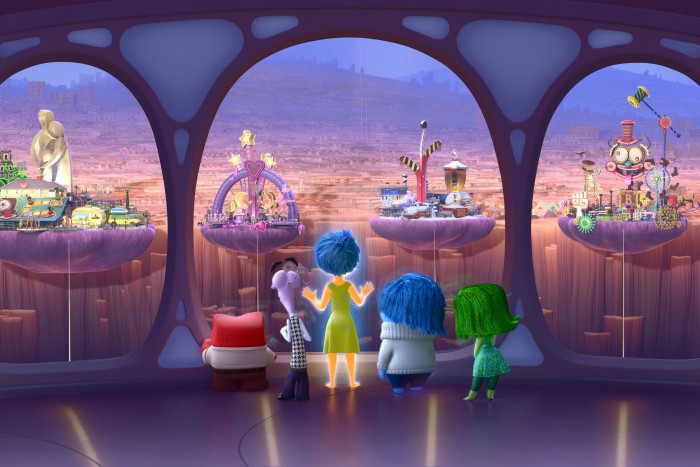 We hear much about the story process at Pixar, how stories are reshaped and developed over years. In this movie, was the section that needed the most massaging?
We hear much about the story process at Pixar, how stories are reshaped and developed over years. In this movie, was the section that needed the most massaging?
PD: This film had a lot of interlocking pieces and made it very complex. So you have the story of Riley, you have the story of Joy, the two relate to each other, but not in a direct physical way, in a much more kind of psychological way. When Riley turns her back on her friend, it causes a physical change. And that took a long time to work out. And it was really year four that we finally landed the architecture of the interior mind world going back to structural changes in Riley's story. So any time you change that, that meant a whole new inside. You know, we had Riley initially growing up in San Francisco. She didn't hadn't moved houses.
JR: Yeah, that's right.
PD: And she was part of a Thanksgiving Day pageant. That was one version of the story as she was growing older, she was gunning for the prized role of the turkey pageant, the turkey. And that was so bizarre and didn't really work. Then we also, on the inside story, we had Joy paired with Fear for a long time. Which I know we've talked about in other media things. And that was a huge change. [The point was] really giving Joy someone to bounce off of and knock heads with that would change her mind about where she stands. It ended up Fear didn't really provide that so we rejiggered the whole thing to make it about Sadness.
JR: With each one of these narrative changes on the outside of Riley's world, would impact the geography of the mind, whether there were different islands or knocking away paths they needed to go. So, poor art department. You know, one word would change in the script and like the world...
PD: Would change.
JR: They're all tough, but this was a much more violent wrestling match to harmonize those two [worlds], I would say.
PD: Yeah, it felt like it.
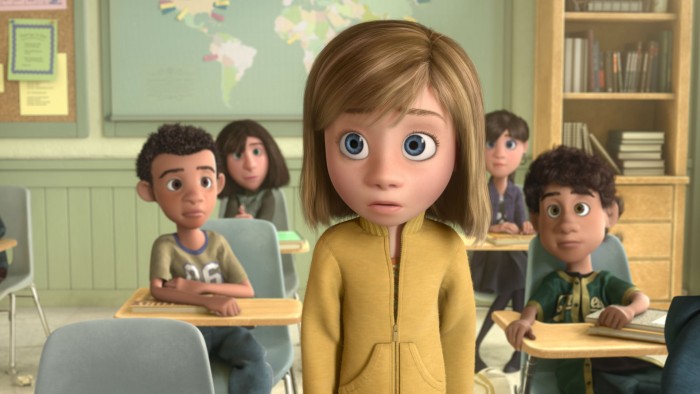 You mentioned at the press conference that at some point the end had Riley growing up more. With everything you just said, it feels like as she gets older, it would get exponentially more difficult to make this movie.
You mentioned at the press conference that at some point the end had Riley growing up more. With everything you just said, it feels like as she gets older, it would get exponentially more difficult to make this movie.
JR: Did we...?
PD: I don't think we ever really had her grow up too much. We just, we played around with what age should she be.
JR: Yeah, that's right.
PD: In order to kind of go through this change from child to adult. She never got to be like 20, but she's heading into the more complex time in her life.
JR: Yeah, well what we didn't say in the press conference, was, in researching, we found girls from 11 to 17 happen to be the most socially aware creatures on the planet. And, you know, that specific window, felt like that helped cement our decision to keep her on the cusp of that.
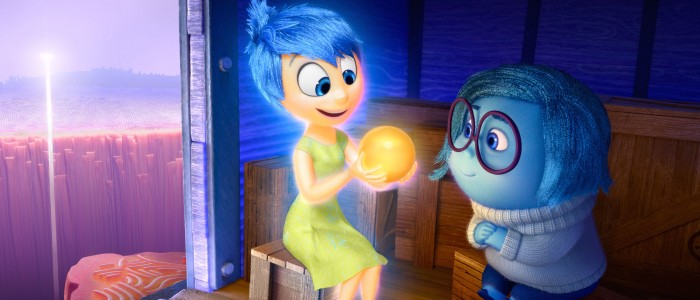 The islands give the movie a perfect structure. But how much further out did it go? Was there ever too much story? I feel like the Train of Thought alone could be a whole movie – everything in the movie could be its own movie.
The islands give the movie a perfect structure. But how much further out did it go? Was there ever too much story? I feel like the Train of Thought alone could be a whole movie – everything in the movie could be its own movie.
PD: Yeah. We expanded way out. In one version, they fell out in the Idea Fields, which we thought of kind of a city like structure. Where you had this center which had headquarters and they were jettisoned way out in the country, where they cultivated new ideas.
JR: Yeah, farmers.
PD: [Farmers] bring [ideas] to market, you know. But then–
JR: They used to ride on a truck. Remember all that?
PD: Yeah. And the whole time, I remember saying, "Man, it would be great if by the end of the movie, the audience feels like out of that whole world I got to see like five percent," 'cause there's so much inferred out there.
JR: Yeah.
PD: I know we had said that we've done outer space, we've done the ocean, but the biggest set we've ever created is inside the mind of an 11 year old girl
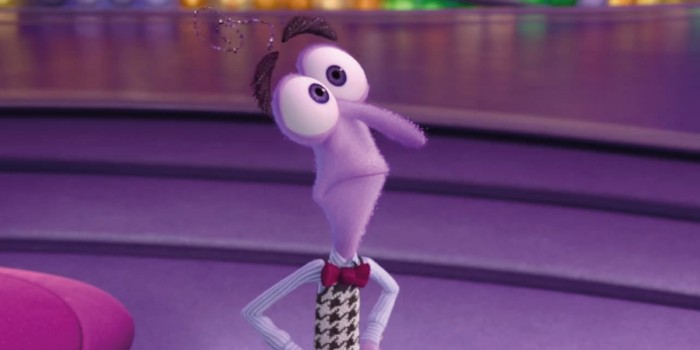 I noticed in the credits that Lorne Michaels and SNL were thanked and Bill said that you guys went there to visit.
I noticed in the credits that Lorne Michaels and SNL were thanked and Bill said that you guys went there to visit.
JR: Yeah.
How did that come about? There's one scene that kind of relates to that, in the movie.
JR: Well really it was knowing Bill and, you know, we're just fans of SNL.
Yeah, sure.
JR: There was a little bit of "We're fans of anything that's show business". And Bill tied it to Dream Productions, which is true. We wanted to see how that worked. But the other thing is we wanted to get was the sense of spontaneity. I mean, animation is so glacially slow. And you have to really engineer anything spontaneous. It's a myth of spontaneity. Going to Saturday Night Live, I think, really helped fuel that. Where you see they sit down with a blank slate on Monday or whatever, and then Saturday night there's a show.
PD: Yeah, it's crazy.
JR: We were really inspired by how fast they go, and that rapport they have. And we were trying to [figure out] "How do we infuse that? What's animation's version of that?" Part of that's in the casting and the writing that these guys did. But I think we thanked Lorne because he was very kind to us, didn't probably have to give us the free pass to run around. And he spoke with us and gave us advice. So he was very nice to us and we appreciated the access.
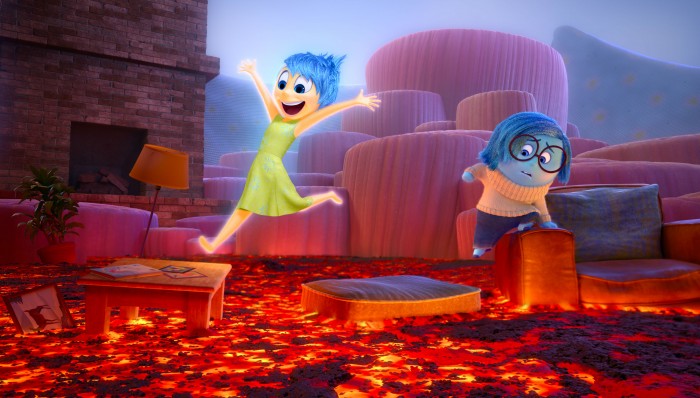 Many Pixar movies pose unique problems, whether animating hair in Brave or fur in Monsters. So what was an animation challenge in this movie that people aren't gonna even think about?
Many Pixar movies pose unique problems, whether animating hair in Brave or fur in Monsters. So what was an animation challenge in this movie that people aren't gonna even think about?
PD: I think it was the cartooniness.
JR: Yeah, I think so too.
PD: We were inspired by Tex Avery, Chuck Jones, all those guys that we grew up with. And as Emotions I thought "Wow, we can really push the level of caricature both in the design and in the style of movement to degrees we've never done before." And that was difficult to do.
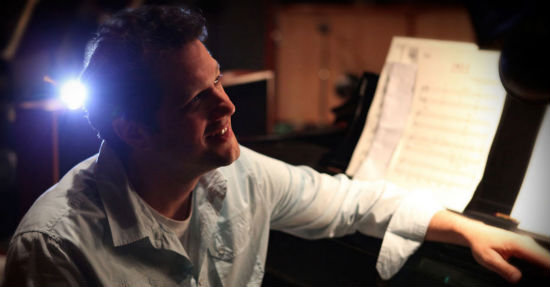 Composer Michael Giacchino hits another home run with this score. Just from the opening studio logo, I immediately had the theme in my head.
Composer Michael Giacchino hits another home run with this score. Just from the opening studio logo, I immediately had the theme in my head.
JR: I know. I love that theme.
What is the process like working with him now? Was it easier after Up?
JR: We're good friends now.
PD: Yeah.
JR: I think that made it easier. That there was no "Get to know you." You know what he does.
PD: Yeah. He kind of knew our sensibilities and what we'd probably want from the film. We talked somewhat abstractly about what we were looking for. We screened the film for him. His first move was to compose a little like eight minute suite of music. Not connected to picture at all. He just said, "This is what I felt when watching your movie." And he hit play and Jonas and I kind of looked at each other and said, "Oh my gosh."
JR: We teared up, I mean, honestly.
PD: Fantastic.
JR: Michael's a filmmaker. I mean, he doesn't just sit and talk music and theory. He talks story and character and people talk to him about certain things. Pete's a great musician as well and it's kind of cool even though these two guys are really sharp musicians who can speak music, they just sit and they talk about feel and tone and character. And then he just responds that way.
PD: Yeah.
JR: I can't imagine working with anyone else for that. I mean, as a producer it makes my job pretty easy.
PD: It's great.
JR: We just kind of make sure he's inspired and has access and he comes up with amazing things.
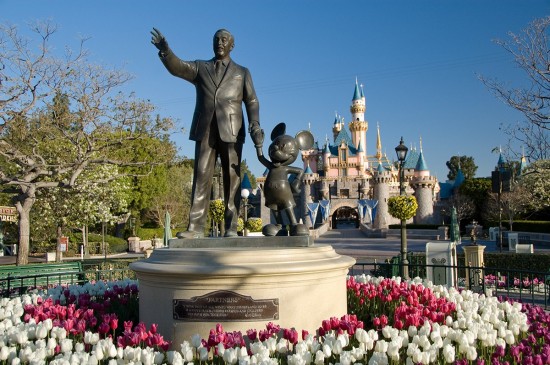 The last thing you mentioned, jokingly I'm sure, was that after you came up with the Inside Out pitch, you called Imagineering and starting talking theme parks.
The last thing you mentioned, jokingly I'm sure, was that after you came up with the Inside Out pitch, you called Imagineering and starting talking theme parks.
PD: It was no joke.
JR: Actually it's true.
PD: It was like 45 minutes.
What is your dream Inside Out Disney ride?
JR: I feel, my dream?
PD: We have a whole pitch already.
JR: We have a whole pitch. Can I go into it?
PD: Yeah.
JR: My pitch is that I think this could be a pavilion at Epcot. You've been to Epcot?
Yes.
JR: You've got The Sea. Nemo's there. So in The Land there's a section called Imagination that's still there and it's still cool. [The character] Figment and all that. I loved that as a kid. And I thought, well, 'We have the mind now.' And we've sort of put visuals to it. And the Train of Thought.
PD: Yeah.
JR: It just feels like on a show with dreams, it feels like it fits. And so we–
PD: I think it's gotta be the Stream of Consciousness ride.
JR: Stream of Consciousness, that was an idea.
PD: And you travel down it.
JR: That was an idea we didn't put in the film. But yeah.
PD: It'd be awesome.
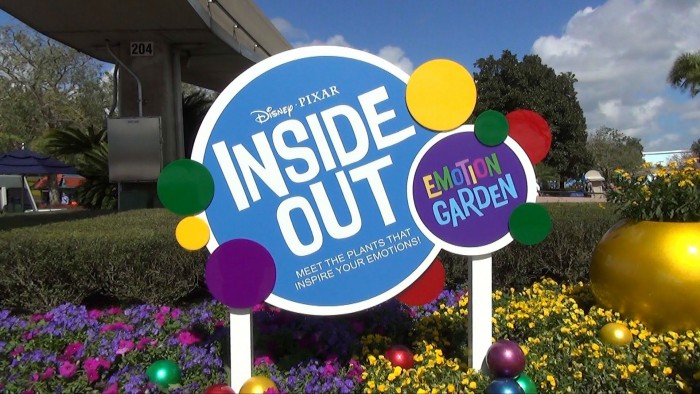 Actually I was there a month ago and they had the Inside Out Emotion colors represented with plants.
Actually I was there a month ago and they had the Inside Out Emotion colors represented with plants.
JR: Yes, I saw it, the Emotion Garden. Listen, we just love all that stuff. And I think our film's fit nicely in the parks with Cars Land if you've been to Cars Land. And Monsters and all that. We're always so proud of that, because I think we're both in this job because we went to Disneyland when we were kids. And so now to walk through and see some of the things we helped kick around and put forth there.
I was bummed they're not gonna make the Monsters Inc. coaster that was rumored for so long.
PD: I know. That would be so cool. I've seen like three or four pitches of that and I'm always like "Yes, yes and then..."
Please, please.
JR: I know.
***
Inside Out is now in theaters.
